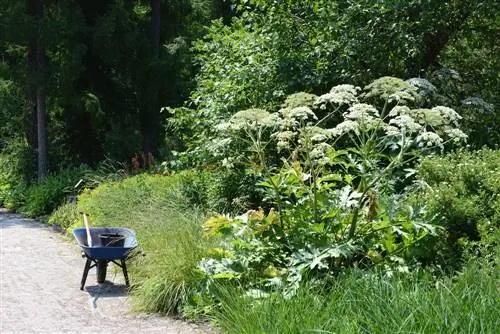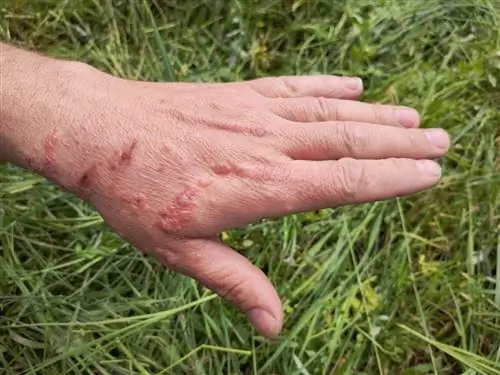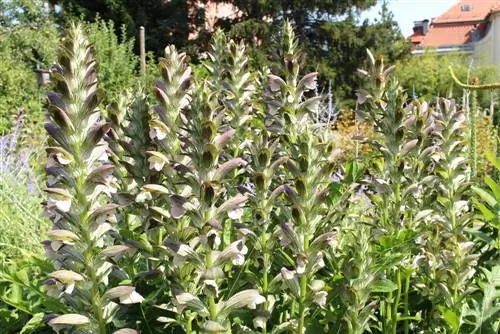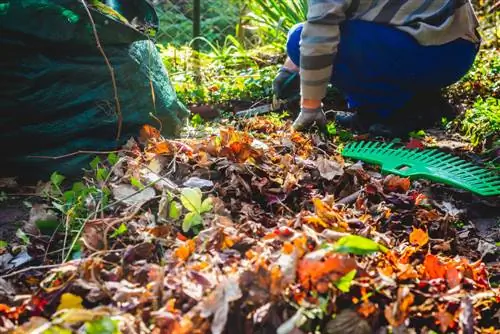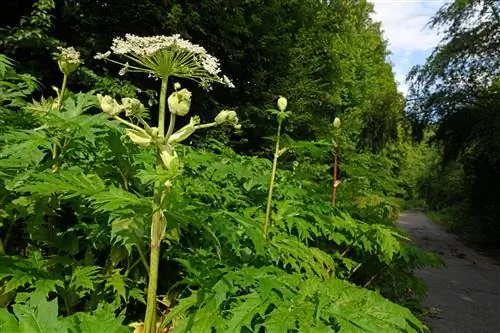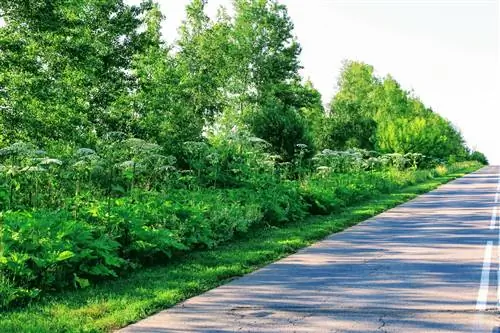- Author admin [email protected].
- Public 2023-12-16 16:46.
- Last modified 2025-06-01 06:02.
With its majestic stature, giant hogweed would be a magnificent ornament in the natural garden. Unfortunately, natural beauty has a dark side that makes combat unavoidable. The introduced hogweed species is poisonous and tends to spread invasively. This guide explains how to successfully combat and properly destroy the Hercules perennial.
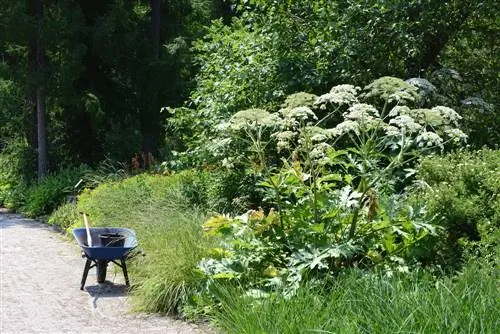
How can I effectively remove giant hogweed?
To successfully remove giant hogweed, cut the plant parts waist-high, cut the rootstock deeply, dig it out with a digging fork and cover the root disc with black foil. Dispose of plant residues and roots, preferably by incineration or in the trash can.
The best time is in spring when it rains
In March and April, giant hogweed has not yet reached its impressive height, making control easier to manage. Ideally, there will be rainy weather or at least overcast weather without sunshine on the chosen date. The poisonous plant is particularly dangerous when your skin comes into contact with the plant sap and sunlight.
Removing hogweed - this is how you can combat the poisonous plant with expertise
The pivotal point for the competent removal of giant hogweed is protecting your he alth. Every inch of your skin must be protected from coming into contact with the toxic plant sap. Well prepared, you can remove the uninvited guest from your garden never to be seen again. This is how it works:
- Cut off above-ground, large parts of the plant in advance to waist height
- Use a sharp spade (€53.00 on Amazon) to cut the rhizome 10 to 15 cm deep
- Lift the rhizome out of the ground with the digging fork
- Cover the root disc with black foil to accelerate the rotting of the root residue
If you only notice giant hogweed during the summer flowering period, cover all flower and seed heads with plastic bags before starting the fight. In this way, you can effectively prevent invasive spread through self-seeding.
Destroy plant residues - you should pay attention to this
The remains of hogweed have no place on the compost heap. From here, the roots or immature seeds make their way into your garden again. If permitted in your region, burn the clippings. Alternatively, dispose of plant parts and root residues in the trash can.
Regular follow-up checks ensure that small residues have not survived the fight and sprout again.
Tip
In the early stages of growth, dangerous giant hogweed cannot be easily distinguished from harmless meadow hogweed. If in doubt, take a look at the lower plant area. Characteristic of the poisonous Hercules perennial are reddish spots at the end of the stem, which cannot be detected on the meadow hogweed.

